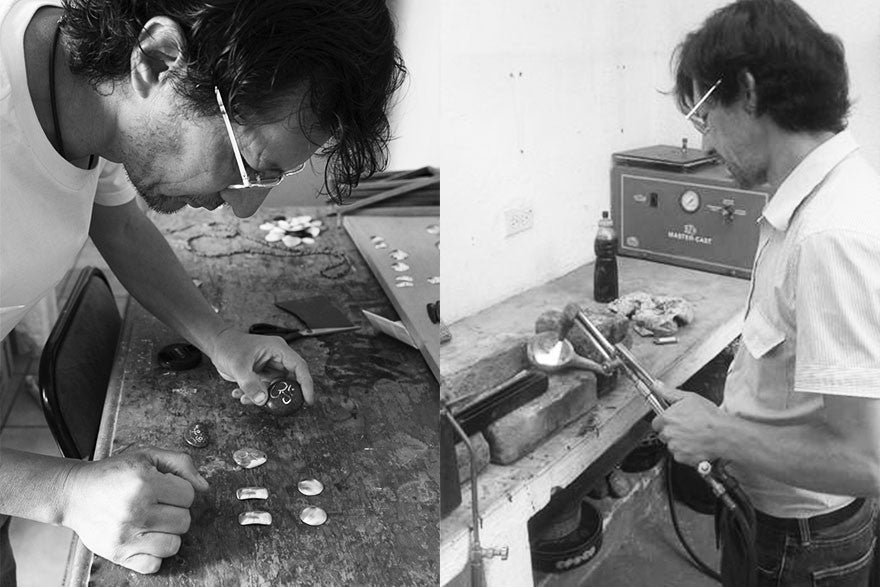Your Cart is Empty
FREE U.S. SHIPPING

Born in Quito, Ecuador, Guido is a jewelry artist known for his work with iconography from ancient Amazonian petroglyphs, as well as using non-traditional materials found in Ecuador's natural surroundings such as river stone, tagua seed, chonta wood, espóndilus shell, black coral, nacre and seeds particular to the Ecuadorian Amazon. In 2014 Guido won the UNESCO Handcraft Excellence Award for jewelery in river stone. A collection of Guido's work is offered online, exclusively through Piezas. This interview was translated from Spanish.
Piezas: What is the inspiration behind your using natural materials and ancient symbolism?
Guido: It's a search for identity in the richness of the Amazonian geography and the cultural history of what is now, Ecuador.
Piezas: What is the process for making a river stone pendant with inlaid silver?
Guido: The work starts from collecting stones from the rivers and waterfalls of the forest. After selecting the best stones, it's designing the jewelry piece, preparing the stone, carving it to embed the silver, and polishing it to obtain a natural shine without the use of lacquer or any artificial treatment. The piece is then assembled with any accessories, which are made manually. A quality control is carried out and the product is packed to be delivered, along with a descriptive document.

Piezas: What new techniques are your currently exploring?
Guido: I am currently working on small sculptures using techniques from the old Quito School—chiseling, embossing and forging amazon insect designs onto river stone. We're currently carrying out the work at the studio, Curi Huaira. Curi means gold and Huaira means wind. It could be translated as "Golden Wind" or as "Gold in the Wind." The Curi Huaira workshop is 28 years old and has worked with a great diversity of techniques, materials and objects including traditional wooden toys, decorative and utilitarian articles, jewelry and traditional silverware from the Quito School. Thus, the studio has also provided much research in the areas of techniques, tooling and design, as well as in the culture and identity of our country's people. Our work has earned us recognition at the national and international level, earning us UNESCO's recognition of artisanal excellence. We have presented our work in different countries and have been awarded for our work due to its unique use of materials, development of techniques and high-quality production.

Piezas: You enjoy using pre-columbian iconography in your work. What is your favorite symbol?
Guido: I have a very special relationship with each of the symbols with which I've worked, however for its harmony and affinity with my spirit, there is a petroglyph called Yachakpak Harkak or "Shaman's Protection." This is a symbol of not only protection but of companionship, which helps me to gather and concentrate the energy necessary to be in touch with the sacred.
Piezas: How do you see your work evolving in the years to come?
Guido: I see it as an expression of the synthesis of all the work I have done over the last 30 years. I feel all of this is directed toward the culmination of an expression of my spirit and my understanding of art and life.
Comments will be approved before showing up.